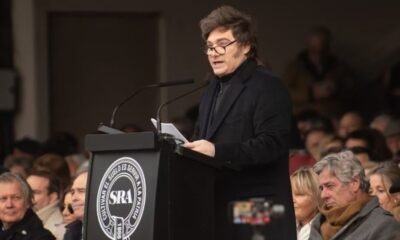INTERNACIONAL
DHS fires back at Democrats for ‘beyond the pale’ rhetoric as ICE agents face wave of violent threats

NEWYou can now listen to Fox News articles!
The Department of Homeland Security (DHS) is continuing to call on Democrats to tone down the rhetoric against Immigration and Customs Enforcement agents as riots not only persisted in Los Angeles Sunday night, but agents continue to face threats of doxxing and violence.
The department has taken issue with not only California leaders but also House Minority Leader Hakeem Jeffries, Boston Mayor Michelle Wu and Minnesota Gov. Tim Walz.
«The violent targeting of law enforcement in Los Angeles by lawless rioters is despicable and Mayor Bass and Governor Newsom must call for it to end,» DHS Assistant Secretary Tricia McLaughlin said in a Saturday statement. «The men and women of ICE put their lives on the line to protect and defend the lives of American citizens.»
ACTING ICE DIRECTOR CALLS MAYOR WU’S NEO-NAZI COMPARISON ‘DISGUSTING’ AMID INCREASE IN AGENT ASSAULTS
The Department of Homeland Security (DHS), led by Secretary of Homeland Security Kristi Noem, is continuing to call on Democrats to tone down the rhetoric against Immigration and Customs Enforcement agents. (Kevin Lamarque/Reuters)
«Make no mistake, Democrat politicians like Hakeem Jeffries, Mayor Wu of Boston, Tim Walz, and Mayor Bass of Los Angeles are contributing to the surge in assaults of our ICE officers through their repeated vilification and demonization of ICE,» McLaughlin stated. «From comparisons to the modern-day Nazi Gestapo to glorifying rioters, the violent rhetoric of these sanctuary politicians is beyond the pale. This violence against ICE must end.»
The department says there’s been a 413% increase in assaults against ICE agents, which comes as the riots in Los Angeles are centered against the presence of the agency in the city.
Wu and Jeffries recently faced criticism for their comments on ICE agents masking while conducting sweeps to conceal their identity for safety reasons.
«Every single ICE agent who is engaged in this aggressive overreach and are trying to hide their identities from the American people will be unsuccessful in doing that,» Jeffries said on Capitol Hill.
«This is America. This is not the Soviet Union,» he added, saying identification is needed to comply with the law and have proper «transparency.» «We’re not behind the Iron Curtain. This is not the 1930s. And every single one of them, no matter what it takes, no matter how long it takes, will of course be identified.»
Wu was slammed for comments where she drew a tie between ICE and neo-Nazi group Nationalist Social Club-131 for the masking decision, which DHS called «sickening,» according to the Boston Herald.
FEDERAL OFFICIALS SLAM DEMOCRATS FOR ‘DANGEROUS’ RHETORIC AS ICE AGENTS FACE VIOLENT MOBS IN LA, NYC

In response to an online video of a Democratic state representative in Tennessee allegedly stalking ICE agents, the DHS said that «this Administration is not playing games with the lives and safety of our ICE officers.» (Minh Connors/Anadolu via Getty Images and ICE)
«I don’t know of any police department that routinely wears masks,» Wu said. «We know that there are other groups that routinely wear masks. NSC-131 routinely wears masks.»
Minnesota Gov. Tim Walz, who was the Democratic vice presidential nominee in 2024, also controversially drew a comparison to the Nazis in May.
CLICK HERE FOR MORE IMMIGRATION COVERAGE
«I’m gonna start with the flashing red light — Donald Trump’s modern-day Gestapo is scooping folks up off the streets,» Walz claimed at a University of Minnesota law school commencement speech. «They’re in unmarked vans, wearing masks, being shipped off to foreign torture dungeons. No chance to mount a defense. Not even a chance to kiss a loved one goodbye. Just grabbed up by masked agents, shoved into those vans, and disappeared.»
In California, the anti-ICE riots triggered an order from President Donald Trump to deploy to the National Guard, which Newsom is expected to take legal action against. Newsom repeatedly has said that the Trump administration has instigated the situation «to manufacture chaos and violence,» and has said that those who are committing «violent acts» will face legal repercussions and are playing into the president’s hands.
ICE OFFICIAL PUTS POLITICIANS ON BLAST, DEMANDING THEY ‘STOP PUTTING MY PEOPLE IN DANGER’

National Guard are deployed around downtown Los Angeles, Jun. 8, 2025, following an immigration raid protest the night before. (Eric Thayer/The Associated Press)
«Continued chaotic federal sweeps, across California, to meet an arbitrary arrest quota are as reckless as they are cruel,» Newsom stated Friday. «Donald Trump’s chaos is eroding trust, tearing families apart, and undermining the workers and industries that power America’s economy.»
Los Angeles Mayor Karen Bass called on residents not to «engage in violence and chaos» and to not «give the administration what they want,» Sunday in an X post, but faced scrutiny for Friday comments saying that «these tactics sow terror in our communities and disrupt basic principles of safety in our city.»
CLICK HERE TO GET THE FOX NEWS APP
When Fox News Digital reached out to Newsom’s office about DHS’ comments, they sent a link to a post in which Acting ICE Director Todd Lyons credited Newsom for complying with ICE detainers for those already behind bars.
Fox News Digital reached out to the offices of Wu, Bass, Walz and Jeffries and did not receive replies.
INTERNACIONAL
El campo de concentración femenino que desafió el olvido

“Una mujer con un absceso dental murió de septicemia en pocos días”. Así lo documentó Germaine Tillion, etnóloga y prisionera en Ravensbrück, quien, durante su cautiverio, recopiló datos sobre la vida y la muerte en el campo, ocultando su investigación bajo la apariencia de recetas de cocina. Este tipo de detalles, recogidos en notas dispersas entre compañeras de confianza, se convirtieron en pruebas fundamentales para los juicios posteriores contra los responsables nazis. La historia de cómo un pequeño grupo de francesas sobrevivió, resistió y luchó por el reconocimiento de su sufrimiento en el único campo de concentración exclusivamente femenino del Tercer Reich es el eje de The Sisterhood of Ravensbrück (“La Hermandad de Ravensbrück”), el libro de Lynne Olson.
La obra de Olson se distingue por centrar su atención en las resistentes francesas que llegaron a Ravensbrück a partir de 1942. A diferencia de investigaciones previas, como la de Sarah Helm, que abarcó el conjunto del campo y se benefició de la apertura de archivos tras la caída del Telón de Acero, Olson sigue el recorrido de estas mujeres desde su arresto y deportación hasta su papel activo en la búsqueda de justicia y reparación tras la guerra. El relato se apoya en la reconstrucción de sus estrategias de supervivencia y resistencia, así como en la forma en que, una vez liberadas, articularon una campaña coordinada para que el mundo reconociera la magnitud de lo vivido.

Ravensbrück, situado a 80 kilómetros al norte de Berlín, fue diseñado para albergar a 3.000 mujeres, pero llegó a concentrar a más de 45.000 prisioneras: judías, romaníes y otras personas consideradas enemigas por el régimen nazi. Las condiciones eran extremas: una sola letrina para cada 200 internas, atención médica que solía resultar letal y enfermedades menores que se convertían rápidamente en sentencias de muerte. En seis años, alrededor de 40.000 mujeres murieron por hambre, enfermedad, tortura, experimentos médicos y, desde diciembre de 1944, por la acción de una cámara de gas instalada apresuradamente cuando los nazis calcularon que no lograrían exterminar a todas las prisioneras mediante el trabajo forzado en la fábrica Siemens cercana.
La credibilidad de los testimonios sobre Ravensbrück siempre estuvo en entredicho, como subraya Olson en su libro. El campo fue liberado tarde, lo que permitió a las SS destruir gran parte de la documentación incriminatoria. Además, la ausencia de imágenes —ningún camarógrafo acompañó al ejército soviético cuando abrió las puertas el 30 de abril de 1945— dificultó que el horror de Ravensbrück quedara grabado en la memoria colectiva, a diferencia de lo ocurrido con Auschwitz o Dachau. Esta falta de pruebas visuales y documentales complicó la tarea de las supervivientes, que debieron encontrar formas alternativas de registrar y transmitir su experiencia.

Las resistentes francesas, clasificadas por los nazis bajo el decreto Nacht und Nebel (“noche y niebla”), estaban destinadas a desaparecer sin dejar rastro. Olson describe cómo estas mujeres supieron aprovechar esa condición ambigua para organizar redes clandestinas dentro del campo: se desplazaban entre barracones durante la noche para repartir medicinas, transmitían mensajes a través de las tuberías y promovían huelgas en las fábricas de municiones. Su actitud, marcada por una “insolencia gala”, les permitió desafiar a los guardianes alemanes sin revelar nunca el alcance de su desafío.
La dificultad para ser creídas tras la liberación llevó a figuras como Tillion a documentar meticulosamente lo ocurrido. Tras la guerra, Tillion publicó su obra fundamental, Ravensbrück, en 1946, ampliándola con nuevas fuentes hasta la edición definitiva de 1988. Sin embargo, ninguna editorial francesa quiso asumir la publicación inicial, que finalmente apareció bajo un sello suizo, reflejo de la resistencia de Francia a confrontar su propio pasado de colaboración y ocupación.

Frente a este olvido deliberado, las supervivientes fundaron la Asociación Nacional de Antiguas Deportadas y Prisioneras de la Resistencia (ADIR), desde la que reclamaron vivienda, atención médica y empleo para las exinternas. Según el periódico inglés The Guardian, la fase de lucha colectiva por el reconocimiento y la justicia constituye el desenlace más potente del libro de Olson. El mayor reto de la ADIR fue lograr que los responsables de Ravensbrück comparecieran ante la justicia: de 38 acusados, 19 fueron ejecutados y el resto recibió penas de prisión o fue absuelto. La falta de pruebas escritas seguía siendo el principal obstáculo, ya que los testimonios orales, por convincentes que resultaran, podían ser descartados como “rumores” por los abogados defensores.
La persistencia de las resistentes francesas resultó decisiva en casos como el del excomandante Fritz Suhren, arrestado en 1950 mientras trabajaba como camarero en una cervecería de Berlín. En ese proceso, por primera vez, se admitieron las notas originales de Tillion, quien demostró que Suhren había firmado la orden de ejecución de 500 mujeres el 6 de abril de 1945. El 12 de junio de 1950, Suhren fue fusilado.
INTERNACIONAL
Bondi DOJ files complaint alleging misconduct by Federal Judge James Boasberg
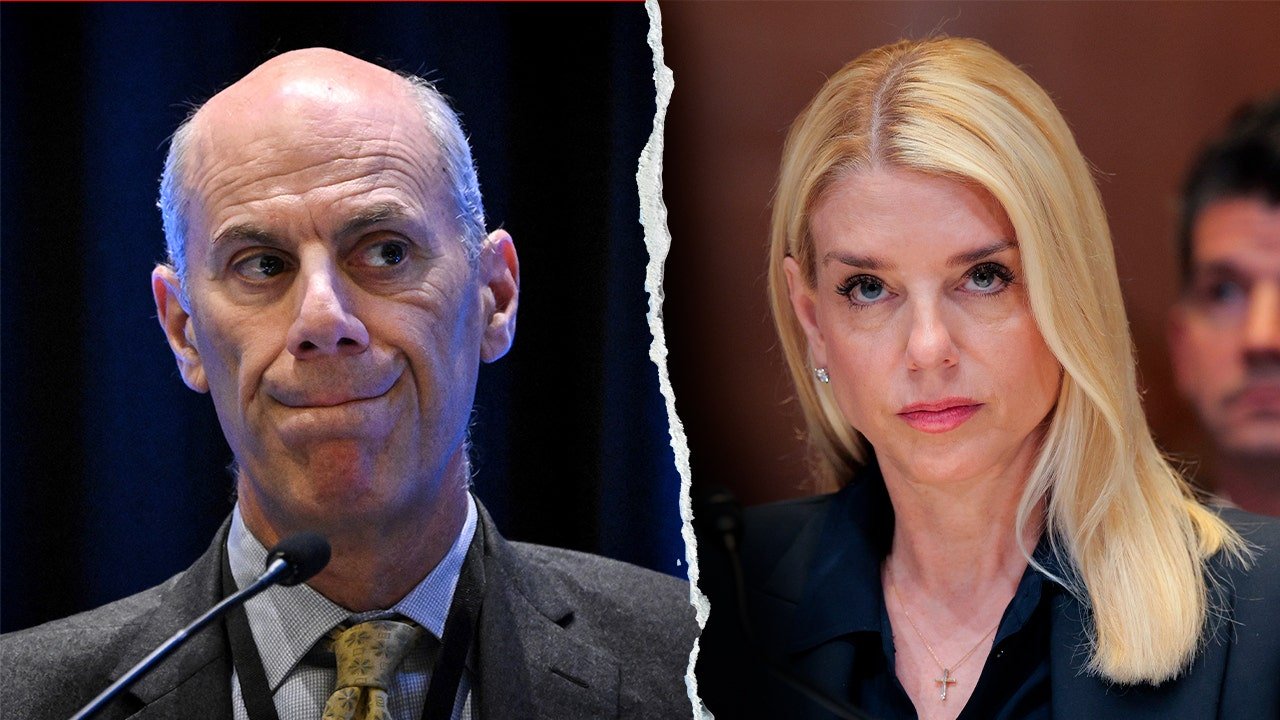
NEWYou can now listen to Fox News articles!
The Department of Justice has filed an official complaint alleging misconduct by US District Court Chief Judge James Boasberg. Fox News has reviewed the complaint which was written by Attorney General Pam Bondi’s Chief of Staff Chad Mizelle and addressed to the Chief Judge of the United States Court of Appeals for the District of Columbia Circuit, Sri Srinivasan.
Fox News has learned that the complaint was written and filed at the direction of Attorney General Pam Bondi.
WHO IS JAMES BOASBERG, THE US JUDGE AT THE CENTER OF TRUMP’S DEPORTATION EFFORTS?
«The Department of Justice respectfully submits this complaint alleging misconduct by U.S. District Court Chief Judge James E. Boasberg for making improper public comments about President Donald J. Trump to the Chief Justice of the United States and other federal judges that have undermined the integrity and impartiality of the judiciary,» says Mr. Mizelle.
Judge Boasberg is presiding over a high-profile case involving the deportation of several migrants to El Salvador and has talked about holding DOJ lawyers in contempt because of his assertion that his order to turn airborne planes around was not followed. President Trump has also made critical comments about Judge Boasberg.
The Justice Department, headed by Attorney General Pam Bondi, has filed an official complaint regarding US District Court Chief Judge James Boasberg. (Getty Images)
The complaint details two occasions on which Judge Boasberg made comments the Justice Department alleges undermine the integrity and impartiality of the judiciary.
«On March 11, 2025, Judge Boasberg attended a session of the Judicial Conference of the United States, which exists to discuss administrative matters like budgets, security, and facilities. While there, Judge Boasberg attempted to improperly influence Chief Justice Roberts and roughly two dozen other federal judges by straying from the traditional topics to express his belief that the Trump Administration would «disregard rulings of federal courts» and trigger «a constitutional crisis.» Although his comments would be inappropriate even if they had some basis, they were even worse because Judge Boasberg had no basis—the Trump Administration has always complied with all court orders. Nor did Judge Boasberg identify any purported violations of court orders to justify his unprecedented predictions.»
TRUMP FOE BOASBERG ORDERS DOJ TO DETAIL STATUS OF CECOT MIGRANTS SENT TO VENEZUELA

This is the second time the Bondi DOJ has filed a complaint against a federal judge. (AP Photo/Mark Schiefelbein)
«Within days of those statements, Judge Boasberg began acting on his preconceived belief that the Trump Administration would not follow court orders. First, although he lacked authority to do so, he issued a temporary restraining order preventing the Government from removing violent Tren de Aragua terrorists, which the Supreme Court summarily vacated.
«Taken together, Judge Boasberg’s words and deeds violate Canons of the Code of Conduct for United States Judges, and, erode public confidence in judicial neutrality, and warrant a formal investigation.»
JUDGE BOASBERG ORDERS RUBIO TO REFER TRUMP OFFICIALS’ SIGNAL MESSAGES TO DOJ TO ENSURE PRESERVATION
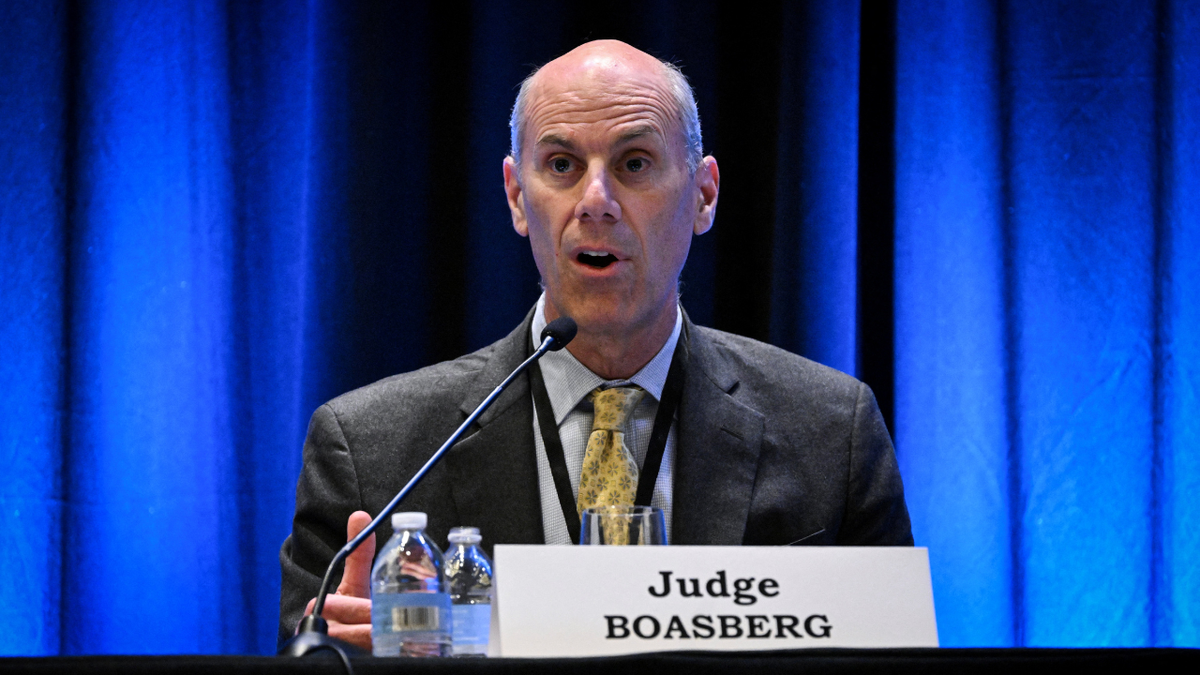
The complaint details two occasions during which Boasberg allegedly made comments undermining the judiciary’s integrity and impartiality. (DREW ANGERER/AFP via Getty Images)
The DOJ is asking Chief Judge Srinivasan to refer the complaint to a special investigative committee as an inquiry is essential to determine whether Judge Boasberg’s conduct constitutes «conduct prejudicial to the effective and expeditious administration of the business of the courts.» The complaint also asks that Judge Boasberg be taken off the case involving Venezuelan migrants who were deported to El Salvador, «to prevent further erosion of public confidence while the investigation proceeds.»
The case in question is J.G.G. v Trump.
This is the second time the Bondi DOJ has filed an official complaint against a federal judge. In late February, the DOJ filed a complaint about US District Judge Ana Reyes, concerning what the DOJ calls Judge Reyes’ «misconduct» during the proceedings in Nicolas Talbott et al. v. Donald J. Trump et al., which is a case brought by two LGBTQ groups challenging the Trump Administration’s Executive Orders barring transgender individuals from serving in the US military.
News of the complaint comes at a time when the Trump administration has excoriated dozens of so-called «activist» judges who have blocked or paused some of Trump’s sweeping executive orders from taking force in his second White House term.
Judge Boasberg in particular found himself at the center of Trump’s ire and attacks on so-called «activist» judges this year, following his March 15 temporary restraining order that sought to block Trump’s use of the Alien Enemies Act to quickly deport hundreds of Venezuelan nationals to El Salvador.
Boasberg had ordered all planes bound for El Salvador to be «immediately» returned to U.S. soil, which did not happen.
WHO IS JAMES BOASBERG, THE US JUDGE AT THE CENTER OF TRUMP’S DEPORTATION EFFORTS?
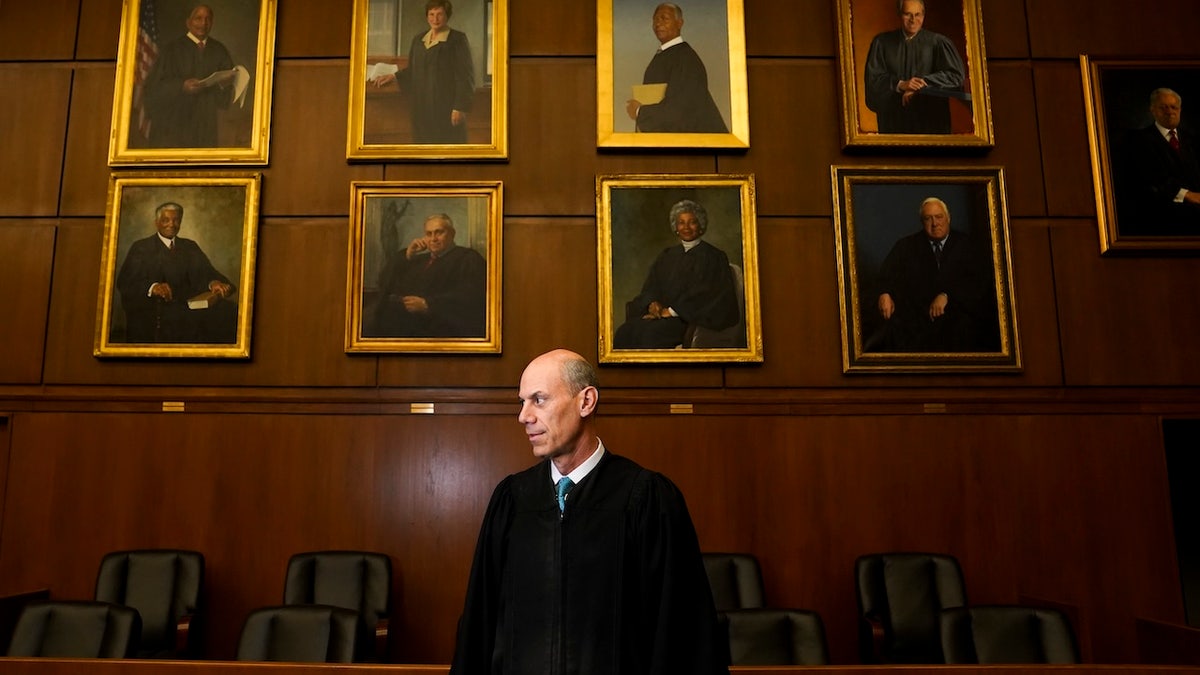
WASHINGTON, DC- Judge James E. Boasberg, chief judge of the Federal District Court in DC, stands for a portrait at E. Barrett Prettyman Federal Courthouse in Washington, DC on March 16, 2023. (Photo by Carolyn Van Houten/The Washington Post via Getty Images) (Washington Post via Getty)
His emergency order touched off a complex legal saga that ultimately spawned dozens of federal court challenges across the country – though the one brought before his court on March 15 was the very first – and later prompted the Supreme Court to rule, on two separate occasions, that the hurried removals had violated migrants’ due process protections under the U.S. Constitution.
Boasberg, as a result, emerged as the man at the center of the legal fallout.
Trump administration officials have repeatedly excoriated Boasberg both for his order and his attempt to determine whether they acted in good faith to comply with his orders, and Trump himself has floated the idea that Boasberg could be impeached earlier this year – prompting Supreme Court Chief Justice John Roberts to issue a rare public warning.
The complaint, focused on months-old behavior and allegations surrounding Judge Boasberg— first tapped as a judge by then-President George W. Bush in 2002, comes at a time when he could again have a say in a major class action case brought by lawyers representing the former CECOT migrants.
Lawyers for the ACLU and others in the class asked Judge Boasberg earlier this month to reopen discovery in the case, citing allegations from a United Nations report regarding custodial status of migrants at CECOT, and the recent decision to remove the 252 migrants sent from the U.S. to El Salvador to Venezuela under the prisoner exchange.
Asked at a status hearing in court last week whether the Justice Department would comply with the court’s orders, DOJ lawyer Tiberius Davis said they would, «if it was a lawful order.»
They also said they would likely seek an appeal from a higher court.
In April, Judge Boasberg also ruled that the court had found «probable cause» to hold the Trump administration in contempt for failing to return the planes to U.S. soil, in accordance with his March 15 emergency order, and said the court had determined that the Trump administration demonstrated a «willful disregard» for his order.
CLICK HERE TO GET THE FOX NEWS APP
The U.S. Court of Appeals for the D.C. Circuit stayed his original motion in April, and has yet to move on the matter.
INTERNACIONAL
Juan Cárdenas: “Detesto la figura del artista que cree que tiene que ir, sí o sí, contra el poder”
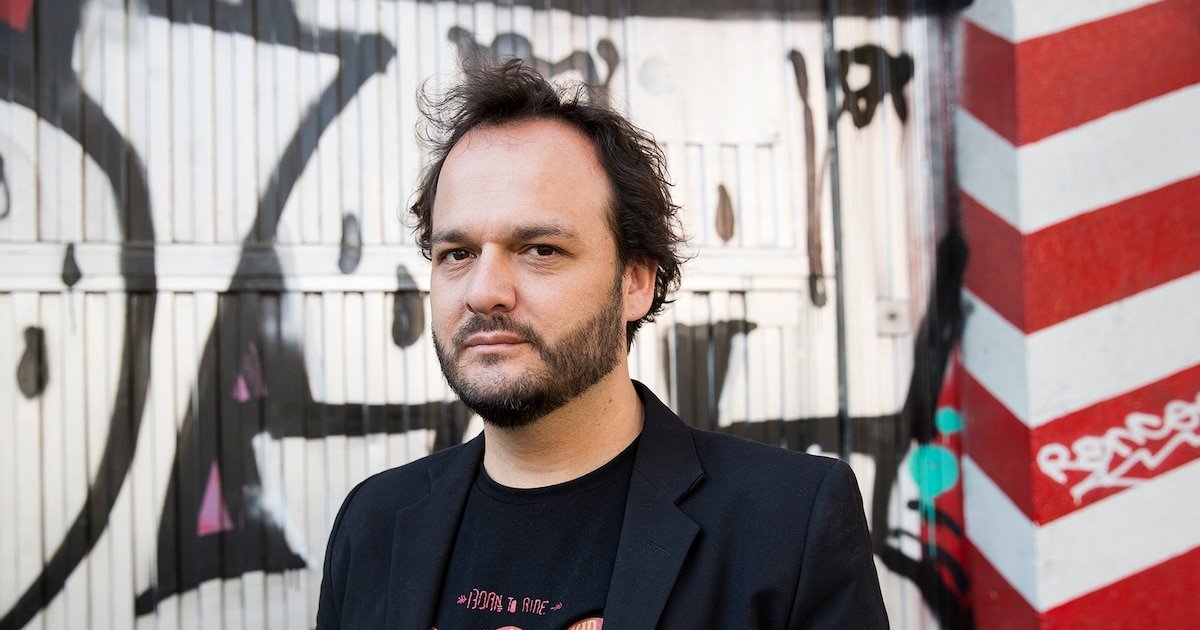
Sentado en el borde de la cama de un hotel porteño, con la valija todavía cerrada y el sol del mediodía pegado a la ventana, Juan Cárdenas dice: “El artista no es un apostador que va al casino a tirar toda su plata a ver si gana algo”. Atravesó el cielo en un avión trasnacional y el “tráfico infernal” de Ezeiza a Buenos Aires para participar del Festival Cuadernos Hispanoamericanos. Que empieza hoy y se extiende hasta el 1 de agosto en tres sedes diferentes. “Siempre hay un no saber en el artista. No es una especie de ignorancia tonta, es una facultad y hay que ir cultivándola”, agrega.
El ciclo es organizado por la Revista literaria Cuadernos Hispanoamericanos, fundada en 1948 y editada de manera ininterrumpida desde entonces. De esta edición participan más de veinte autores en unas trece actividades desparramadas en los cuatro días que dura. Habrá talleres, recitales de poesía y mesas. Cárdenas participa de dos: una es hoy, a las 19:30, en el Centro Cultural de España en Buenos Aires (“Literatura a la contra: algunos discursos incómodos”); otra es el viernes a las 18 en la Biblioteca Ricardo Güiraldes (“Escritura desde los márgenes”). La entrada es libre y gratuita.
Juan Cárdenas es crítico de arte, traductor y escritor. Publicó varias novelas, entre las que se destacan Los estratos, Ornamento y Peregrino transparente. Nació en Colombia y allá vive, aunque también un poco en Chile: va y viene. Hoy trabaja mayormente como docente. Acaba de publicar, por la editorial argentina Sigilo —sello que editó varios de sus textos—, La ligereza, un libro de ensayos. Son cuatro en total, y cada uno a su modo, entre el diario personal, la reseña de obras y el desarrollo de conceptos, explora la relación entre vida y arte en un sentido casi esencial.

En el primero, el más potente, el que da título al libro, dice que “vivimos en un mundo que confunde la ligereza con la frivolidad” y que “no hay nada más pesado, nada más insoportablemente pesado que la frivolidad”, cuyo sabor es el de la “ideología dominante”. También dice que el arte, “si flota, es político”, y “si no es político, no flota, por mucho que hable de política o por mucho que trate de ilustrar alguna de las doctrinas de moda. Esto último es lo que le sucede a buena parte de la literatura feminista, queer, ecologista o antirracista que se escribe hoy”.
Aquel concepto, el de la ligereza, reflexiona ahora, del otro lado del teléfono, apareció a contramano de la fascinación: “Siempre me preguntaba por qué determinadas formas de arte me producían decepción. ¿Por qué esto no funciona? ¿Por qué esto se me cae? Fíjate que uno usa esta expresión cuando algo no le gusta: ‘se me cayó’. Y haciéndome esa pregunta, indagando en esa sensación de decepción, lentamente fui dando con el concepto. Precisamente: se me cae porque le falta ligereza. Fue la conciencia de la pesantez, de esa gravedad innecesaria, la que me llevó a elaborar el concepto».
¿Para qué hacemos política progresista o de izquierdas, si no es para producir placer y felicidad?
Cárdenas sostiene que se trata de un “concepto bien dialéctico”: no busca hacer una “apología de la ligereza”, sino que “siempre es relativo y depende de fuerzas contrarias precisamente a la ligereza”. “Es curioso: lo que mantiene en cierto modo flotando a los objetos del arte es su peso”, agrega. En el libro se ve, sobre todo, en la contraposición que hace entre el arte y la transparencia: “Si todo está demasiado claro, es posible que el diablo nos haya jugado una mala pasada. La ligereza despeja la claridad engañosa y nos devuelve a la superficie turbia, manchada de reflejos”.

“Esto está ligado a la relación con el inframundo. Sé que suena un poco místico, pero en el fondo tiene que ver más bien con otras tradiciones. Es como si las cosas estelares solamente pudieran serlo si también mantienen un extraño vínculo con lo que está por debajo de la Tierra”, dice y agrega: “Lo que trato de mostrar es la tensión entre el impulso religioso, que siempre está dentro del arte, y el discurso profanador. El arte tiende a profanar, pero al mismo tiempo tiende a mantener ese vínculo con lo sacro. Y esa duplicidad es lo que yo no veo en mucho del arte militante que hoy se promueve”.
“Ese arte falsamente militante —continúa— es incapaz de salirse de las coordenadas identitarias, lo que es un problema. Lo identitario está ligado a unas lógicas de poder contemporáneo que tienen que ver con el mercado. No encuentro mucha diferencia entre identidad y marca. Ahí dirijo mi ataque. Y sé que hoy está todo muy polarizado, que esto parece el típico discurso antiwoke de que ya no se puede decir nada, lo incorrecto, patatín, patatán. Al contrario: lo que estoy mostrando es una secreta complicidad entre ese arte falsamente militante y la dictadura de mercado en la que estamos”.
Detesto la figura del artista que cree que tiene que ir, sí o sí, contra el poder
En ese punto, La ligereza viene a recuperar una zona fundante, primitiva y —otra vez— esencial: el placer. “El arte da placer no porque imite a la vida, sino porque es capaz de traducir sus leyes secretas al lenguaje de las formas sensibles (…) La ligereza se conquista en el placer por lo gratuito. En aquello que se hace por ninguna razón, como la sucesión de Fibonacci, cuyos misteriosos números se despliegan por toda la naturaleza, desde las alcachofas hasta el árbol genealógico de las abejas. Sigamos soplando porque sí. Busquemos algo de placer, a ver adónde nos conduce”, escribe Cárdenas.

Ahora, en esta breve conversación con Infobae Cultura, subraya que “ese placer está fuertemente conectado a las energías políticas más profundas y elementales. ¿Para qué hacemos política, digámoslo así, progresista o de izquierdas, si no es para producir placer y producir felicidad? Si nos desconectamos de ese principio, pues no veo yo que eso conduzca ni al progresismo ni a ninguno de los valores de los que se supone que defendemos». Entonces aparece la pregunta por el propósito del arte. “Personalmente, no me siento muy cómodo con asignarle por default al arte una función”, asegura.
“Incluso detesto también una cosa que se ha vuelto muy cómoda en las últimas décadas: la figura del artista, escritor o intelectual que cree que sí o sí tiene que ir contra el poder. Si rascas un poco verás que es una actitud completamente frívola, que por lo general lo único que hace es repetir discursos inofensivos y atacar unos poderes que es fácil atacar. Yo creo que el arte se mueve en el interior de tensiones, y si esas intenciones obligan, por una circunstancia coyuntural, política o de algún tipo, al artista a manifestarse e ir a la contra, pues me parece que tiene que ser así”, agrega.
“No me gusta asignarle funciones fijas al arte. Creo que el arte se tiene que mover en un terreno que a veces es difícil de entender, lleno de ambigüedades, y uno como artista va navegando esas tensiones y va tomando decisiones a partir de su lectura. Además, siempre hay un no saber. No es una especie de ignorancia tonta. El artista no es un apostador que va al casino a tirar toda su plata a ver si gana algo. El no saber es una facultad y hay que ir cultivándola. El artista no sabe muy bien qué es lo que no sabe, pero intuye cómo darle forma y cuál es el contorno de eso que no sabe”, concluye.



















